新規記事の投稿を行うことで、非表示にすることが可能です。
2017年12月21日
#063 伊勢根付職人 梶浦 明日香
明日への扉 by アットホーム
#063 伊勢根付職人 梶浦 明日香
明日への扉 by アットホーム
https://youtu.be/GwCdvEetxig
明日への扉 by アットホーム
2017/02/22 に公開
今回のエピソードはこちらからご覧ください。
http://athome-tobira.jp/story/063-kaj...
-----
『明日への扉』は、CS「ディスカバリーチャンネル」にて毎週金曜日 22:53〜23:00 放送しています。
http://athome-tobira.jp/
『明日への扉』
わが国が世界に誇る、固有の伝統・文化の数々…。
先人たちが築いてきた、その知恵や技を受け継ぐ若者たちがいる。
夢を追いかけ日々研鑽する彼らの「ひたむきで真摯な姿」と普段の暮らしから垣間見える“素顔”を紹介していきます。
制作著作: アットホームホールディングス株式会社
制作協力: 日企
http://www.athome-inc.jp/
カテゴリ 非営利団体と社会活動
ライセンス 標準の YouTube ライセンス
☆☆☆~~~~~~~~~~~~~~~~~~~~~~~~~~~~~~~~~~~~~~~~~~~☆☆☆
☆ Reference Link ☆
根付(ねつけ、ねづけ) :Wikipedia
https://ja.wikipedia.org/wiki/%E6%A0%B9%E4%BB%98
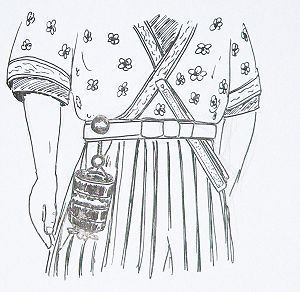
根付 使用例
根付(ねつけ、ねづけ)とは、江戸時代に煙草入れ、矢立て、印籠、小型の革製鞄(お金、食べ物、筆記用具、薬、煙草など小間物を入れた)などを紐で帯から吊るし持ち歩くときに用いた留め具。江戸時代から近代にかけての古根付と、昭和、平成の現代根付に大別される。
製作国の日本以上に、日本国外では骨董的蒐集品として高く評価されている。日本では郷誠之助と高円宮憲仁親王とが蒐集家として著名である。2人が遺した膨大な蒐集品は、いずれも東京国立博物館に寄贈され、その名を冠したコレクションとして所蔵されている。
安土桃山時代が終わり、徳川家康の天下が始まるのに合わせて、相当な薬愛用家だった家康は自分のみならず、高級武士や公家等にその大切さを説き、太平の世になっても外出時に、切り傷・腹痛・頭痛薬等常備薬を持ち歩くことを直参旗本や外様大名に奨励した。彼らは常備薬を携帯するに当たって、その入れ物として、印鑑と朱肉を入れた小さな携帯用印籠に目をつけ、これをさらに小型化し、印鑑や朱肉の代わりに薬を入れ、携帯用薬籠とした。 この印籠を武士やその奥方が使用する場合、帯からぶら提げる時に、「留め具」の役目を果たしたのが「根付」である。
印籠の普及期である江戸時代初期には、この根付として、銅製の糸印(いといん)が多く使用されたと言われている。 豊臣秀吉は、糸印の著名蒐集家だった。高級武士もそれに倣い、糸印の蒐集に励んだ。江戸時代には各屋敷には少なからずの糸印が存在し、極自然的に印籠を提げる役割を果たした。しかしこの「糸印」は角張った形をしていたために、帯を傷めてしまう傾向があった。
現在の様な“なごみ感”がある手触り仕上げになったのは、17世紀になってからである。また、17〜18世紀にかけて、“なごみ感”プラス“洒落”・“エスプリ”・“伊達心”等が付け加えられ、近代の進化した根付が完成された。その要因として、17世紀頃までに印籠と根付がセットで、高級武士・公家から茶人・商人・町人まで普及し、その粋なファッション表現が昇華されたから、と考えられる。また、富裕層が所持した印籠や根付には、蒔絵や象牙等が使用され、彼らはお金に糸目をつけない芸術性を求めた。
根付の持つ高い芸術性は現在、世界中の多くの人々から、日本独特の精緻的文化として認められており、当時の“日本人の心意気”を今に伝えている。
この根付の文化が現在の携帯電話などに取り付けられる携帯機器用ストラップの伝統にもつながっていると見る説もある[1]。
☆☆☆~~~~~~~~~~~~~~~~~~~~~~~~~~~~~~~~~~~~~~~~~~~☆☆☆
Netsuke :Wikipedia
https://en.wikipedia.org/wiki/Netsuke
Netsuke (根付) [netsɯke] are miniature sculptures that were invented in 17th-century Japan to serve a practical function (the two Japanese characters ne+tsuke mean "root" and "to attach"). In English the word may be italicized or not, with American English tending to favour the former and British English the latter.[1][2]
Traditional Japanese garments−robes called kosode and kimono−had no pockets; however, men who wore them needed a place to store their personal belongings, such as pipes, tobacco, money, seals, or medicines. Their solution was to place such objects in containers (called sagemono) hung by cords from the robes' sashes (obi). The containers may have been pouches or small woven baskets, but the most popular were beautifully crafted boxes (inrō), which were held shut by ojime, which were sliding beads on cords. Whatever the form of the container, the fastener that secured the cord at the top of the sash was a carved, button-like toggle called a netsuke.
Netsuke, like the inrō and ojime, evolved over time from being strictly utilitarian into objects of great artistic merit and an expression of extraordinary craftsmanship. Such objects have a long history reflecting the important aspects of Japanese folklore and life. Netsuke production was most popular during the Edo period in Japan, around 1615–1868. Today, the art lives on, and some modern works can command high prices in the UK, Europe, the USA, Japan and elsewhere. Inexpensive yet faithful reproductions are available in museums and souvenir shops.
Okimono, small and purely decorative sculptures, were often made by the same artists who produced netsuke.
☆☆☆~~~~~~~~~~~~~~~~~~~~~~~~~~~~~~~~~~~~~~~~~~~☆☆☆
Netsuke: From Fashion Fobs to Coveted Collectibles
NOTE : 出典 The source
https://www.metmuseum.org/toah/hd/nets/hd_nets.htm
From the seventeenth through mid-nineteenth centuries, Japanese citizens of all classes wore the
−a simple T-shaped robe constructed with minimal cutting and tailoring−wrapped around the body and held in place with an obi sash. In order to carry small items such as tobacco, medicine, and seals, ingeniously constructed sagemono (a collective term for “hanging things”) were suspended on cords that hung from the obi sash (). Stacked, nested containers, known as inrô, were specifically designed to hold medicine or seals (
November 2009
明日への扉 by アットホーム
https://youtu.be/GwCdvEetxig
明日への扉 by アットホーム
2017/02/22 に公開
今回のエピソードはこちらからご覧ください。
http://athome-tobira.jp/story/063-kaj...
-----
『明日への扉』は、CS「ディスカバリーチャンネル」にて毎週金曜日 22:53〜23:00 放送しています。
http://athome-tobira.jp/
『明日への扉』
わが国が世界に誇る、固有の伝統・文化の数々…。
先人たちが築いてきた、その知恵や技を受け継ぐ若者たちがいる。
夢を追いかけ日々研鑽する彼らの「ひたむきで真摯な姿」と普段の暮らしから垣間見える“素顔”を紹介していきます。
制作著作: アットホームホールディングス株式会社
制作協力: 日企
http://www.athome-inc.jp/
カテゴリ 非営利団体と社会活動
ライセンス 標準の YouTube ライセンス
☆☆☆~~~~~~~~~~~~~~~~~~~~~~~~~~~~~~~~~~~~~~~~~~~☆☆☆
☆ Reference Link ☆
根付(ねつけ、ねづけ) :Wikipedia
https://ja.wikipedia.org/wiki/%E6%A0%B9%E4%BB%98

根付 使用例
根付(ねつけ、ねづけ)とは、江戸時代に煙草入れ、矢立て、印籠、小型の革製鞄(お金、食べ物、筆記用具、薬、煙草など小間物を入れた)などを紐で帯から吊るし持ち歩くときに用いた留め具。江戸時代から近代にかけての古根付と、昭和、平成の現代根付に大別される。
製作国の日本以上に、日本国外では骨董的蒐集品として高く評価されている。日本では郷誠之助と高円宮憲仁親王とが蒐集家として著名である。2人が遺した膨大な蒐集品は、いずれも東京国立博物館に寄贈され、その名を冠したコレクションとして所蔵されている。
安土桃山時代が終わり、徳川家康の天下が始まるのに合わせて、相当な薬愛用家だった家康は自分のみならず、高級武士や公家等にその大切さを説き、太平の世になっても外出時に、切り傷・腹痛・頭痛薬等常備薬を持ち歩くことを直参旗本や外様大名に奨励した。彼らは常備薬を携帯するに当たって、その入れ物として、印鑑と朱肉を入れた小さな携帯用印籠に目をつけ、これをさらに小型化し、印鑑や朱肉の代わりに薬を入れ、携帯用薬籠とした。 この印籠を武士やその奥方が使用する場合、帯からぶら提げる時に、「留め具」の役目を果たしたのが「根付」である。
印籠の普及期である江戸時代初期には、この根付として、銅製の糸印(いといん)が多く使用されたと言われている。 豊臣秀吉は、糸印の著名蒐集家だった。高級武士もそれに倣い、糸印の蒐集に励んだ。江戸時代には各屋敷には少なからずの糸印が存在し、極自然的に印籠を提げる役割を果たした。しかしこの「糸印」は角張った形をしていたために、帯を傷めてしまう傾向があった。
現在の様な“なごみ感”がある手触り仕上げになったのは、17世紀になってからである。また、17〜18世紀にかけて、“なごみ感”プラス“洒落”・“エスプリ”・“伊達心”等が付け加えられ、近代の進化した根付が完成された。その要因として、17世紀頃までに印籠と根付がセットで、高級武士・公家から茶人・商人・町人まで普及し、その粋なファッション表現が昇華されたから、と考えられる。また、富裕層が所持した印籠や根付には、蒔絵や象牙等が使用され、彼らはお金に糸目をつけない芸術性を求めた。
根付の持つ高い芸術性は現在、世界中の多くの人々から、日本独特の精緻的文化として認められており、当時の“日本人の心意気”を今に伝えている。
この根付の文化が現在の携帯電話などに取り付けられる携帯機器用ストラップの伝統にもつながっていると見る説もある[1]。
☆☆☆~~~~~~~~~~~~~~~~~~~~~~~~~~~~~~~~~~~~~~~~~~~☆☆☆
Netsuke :Wikipedia
https://en.wikipedia.org/wiki/Netsuke
Netsuke (根付) [netsɯke] are miniature sculptures that were invented in 17th-century Japan to serve a practical function (the two Japanese characters ne+tsuke mean "root" and "to attach"). In English the word may be italicized or not, with American English tending to favour the former and British English the latter.[1][2]
Traditional Japanese garments−robes called kosode and kimono−had no pockets; however, men who wore them needed a place to store their personal belongings, such as pipes, tobacco, money, seals, or medicines. Their solution was to place such objects in containers (called sagemono) hung by cords from the robes' sashes (obi). The containers may have been pouches or small woven baskets, but the most popular were beautifully crafted boxes (inrō), which were held shut by ojime, which were sliding beads on cords. Whatever the form of the container, the fastener that secured the cord at the top of the sash was a carved, button-like toggle called a netsuke.
Netsuke, like the inrō and ojime, evolved over time from being strictly utilitarian into objects of great artistic merit and an expression of extraordinary craftsmanship. Such objects have a long history reflecting the important aspects of Japanese folklore and life. Netsuke production was most popular during the Edo period in Japan, around 1615–1868. Today, the art lives on, and some modern works can command high prices in the UK, Europe, the USA, Japan and elsewhere. Inexpensive yet faithful reproductions are available in museums and souvenir shops.
Okimono, small and purely decorative sculptures, were often made by the same artists who produced netsuke.
☆☆☆~~~~~~~~~~~~~~~~~~~~~~~~~~~~~~~~~~~~~~~~~~~☆☆☆
Netsuke: From Fashion Fobs to Coveted Collectibles
NOTE : 出典 The source
https://www.metmuseum.org/toah/hd/nets/hd_nets.htm
From the seventeenth through mid-nineteenth centuries, Japanese citizens of all classes wore the
−a simple T-shaped robe constructed with minimal cutting and tailoring−wrapped around the body and held in place with an obi sash. In order to carry small items such as tobacco, medicine, and seals, ingeniously constructed sagemono (a collective term for “hanging things”) were suspended on cords that hung from the obi sash (). Stacked, nested containers, known as inrô, were specifically designed to hold medicine or seals (
10.211.2081/div>). Netsuke served as anchors or counterweights for inrô and sagemono (). A single cord was threaded through a cord channel on one side of the suspended container, through two holes (himotoshi) in the netsuke, then through the other side of the container, and knotted on the underside of the container (). A decorative bead, or ojime, slid along the cord between the netsuke and sagemono, allowing the user to open and close the container ().
The wearer would slip the netsuke under and dangle it over the obi sash, allowing the sagemono to hang suspended between waist and hip. In order to access the contents of the sagemono, the wearer slipped the netsukebehind the obi sash, liberating the ensemble. By sliding the ojime toward the netsuke, the contents of the container were easily accessible.
Primary sources referencing netsuke are relatively scant. Most of our knowledge about
Edo-period
(1615–1868) netsuke carvers derives from Inaba Tsûyrû’s Sôken kishô (Sword Furnishings and Paraphernalia, 1781), a seven-volume publication that focused primarily on
, but also includes a description of fifty-four famous carvers of the period, most from the regions of Kyoto and Osaka.
Originally worn as part of a male kimono ensemble by men of the warrior class, inrô and netsuke developed as a form of conspicuous consumption within a culture that imposed a rigid four-tiered social system with warriors at the top, followed by farmers who tilled the land, artisans who crafted material goods, and merchants at the bottom. The artisans and merchants were collectively referred to as townspeople, or chônin. Given that the merchants were economically better off than many members of the socially superior
, inrô and netsuke allowed merchants to display their wealth without breaking any sumptuary laws that regulated the types of houses they could build or fabrics they could wear. Inrô and netsuke, often made of expensive, rare materials and bearing the signature and seal of the carver, were thus designed not only for their functional ability to carry things, but also as markers of wealth ().
Two of the most commonly used materials for netsuke were ivory and wood, with
favored for its fine grain and durability. About 80 percent of surviving antique netsuke were carved in various types of native Japanese wood−cypress, cherry, black persimmon, yew, camphor, zelkova, and camellia. Elephant tusk ivory was one of the most popular materials for netsuke carvers for centuries (). With the enactment of international trade restrictions on elephant ivory in 1989, however, netsukecarvers turned to other sources, including fossilized mammoth and walrus tusks. Extant eighteenth- and nineteenth-century netsuke made of or inlaid with coral, shells, metals, ebony, porcelain (), cloisonné,
, and various nuts attest to the skilled carvers’ ingenuity in conveying the plasticity of these materials, despite their hardness and resistance to wear ().
Traditionally, netsuke carvers worked in specific formats. Three-dimensional figures, or katabori, account for the most numerous type (). They are carved in the round and often referred to as miniature sculptures, although unlike most sculptures, the underside of the base is also completely carved (). Rounded forms (manju), named after the round sweet bean cakes they resemble, were also quite popular (;). Another conventional netsuke shape is the kagami, or mirror, consisting of a round, bowl-shaped base and a lid fashioned of a flat disk of metal. A variety of metals such as brass, bronze, copper, gold, iron, pewter, and silver were used (). Two alloys, shakudô (copper and gold) and shibuichi (copper and silver), were especially favored for their range of colors and patina.
Carvers drew on varied themes for these accessories−nature, mythical tales, historical figures, masks used in theatrical performances, and gods and demons (). Other subgroups suggest a fascination with erotica, the grotesque, or parodies and satirical depictions of elite culture. Given that netsuke were small and easily concealed, portrayals of ribald themes or satirical iconography could easily be hidden from the Tokugawa military authorities, thereby providing the townspeople with a whimsical and in some cases subversive outlet from officially sanctioned
prevailing during the Edo period.
During the late nineteenth century, netsuke transitioned from functional and fashionable accessories to objets d’art favored by Westerners for their exquisite carving and diminutive size. Upon the opening of Japan’s ports to foreign trade in 1854 and the subsequent introduction of Western-style suits and uniforms, the kimono receded into the confines of the private sphere. Once the carvings ceased to be necessary accoutrements for everyday male dress, demand for netsuke as a fashion accessory declined as well. But with the increasing number of foreigners residing in Japan, the market for netsuke as a collector’s item expanded. Most netsuke can be held in the palm of one’s hand, rendering it a perfect souvenir of sojourns to what was then an “exotic East.” Compact and portable by design, netsukewere exported in large numbers. The Russian jeweler Peter Carl Fabergé (1846–1920), known for his eponymous Fabergé eggs, was entranced by netsuke and became an avid collector. The majority of the netsuke in the Museum’s collection were presented by Mrs. (Margaret) Russell Sage (1828–1918), one of the Museum’s great benefactors, in 1910. Other bequests came from New Yorkers who flourished in the late nineteenth century, including the chief designer for Tiffany and Co. Edward C. Moore (1827–1891), the founder of the B. Altman and Co. store Benjamin Altman (1840–1913), the antiquarian Stephen Whitney Phoenix (1838–1891), and Louisine Havemeyer (1855–1929), wife of the sugar magnate Henry O. Havemeyer (1847–1907).
Bowing to traditions established by Japanese carvers of the Edo period, contemporary carvers infuse netsuke with a vitality and freshness while simultaneously honoring their original, functional attributes. No longer required to employ compact designs with smooth surfaces to prevent damage to silk kimono, nor sturdy materials to avoid the risk of breakage, modern and contemporary designers are free to incorporate new materials and unusual shapes into their work.
Netsuke crafted by contemporary carvers unveil the international appeal of what was once a quintessentially Japanese tradition. Until the 1960s, most professional netsuke carvers were Japanese nationals. Beginning in the late 1960s, non-Japanese began carving netsuke, and the total number of international carvers has grown to over one hundred. Today, netsuke are produced and appreciated by carvers and collectors from around the world. One of the world’s most renowned collections of contemporary netsuke, amassed by the late Imperial Prince Takamado Norihito (1954–2002), attests to the ways in which innovation and expertise can grow from a rich historical tradition, even on an astonishingly small scale.
Terry Satsuki Milhaupt
Independent Scholar
The wearer would slip the netsuke under and dangle it over the obi sash, allowing the sagemono to hang suspended between waist and hip. In order to access the contents of the sagemono, the wearer slipped the netsukebehind the obi sash, liberating the ensemble. By sliding the ojime toward the netsuke, the contents of the container were easily accessible.
Primary sources referencing netsuke are relatively scant. Most of our knowledge about
Edo-period
(1615–1868) netsuke carvers derives from Inaba Tsûyrû’s Sôken kishô (Sword Furnishings and Paraphernalia, 1781), a seven-volume publication that focused primarily on
, but also includes a description of fifty-four famous carvers of the period, most from the regions of Kyoto and Osaka.
Originally worn as part of a male kimono ensemble by men of the warrior class, inrô and netsuke developed as a form of conspicuous consumption within a culture that imposed a rigid four-tiered social system with warriors at the top, followed by farmers who tilled the land, artisans who crafted material goods, and merchants at the bottom. The artisans and merchants were collectively referred to as townspeople, or chônin. Given that the merchants were economically better off than many members of the socially superior
, inrô and netsuke allowed merchants to display their wealth without breaking any sumptuary laws that regulated the types of houses they could build or fabrics they could wear. Inrô and netsuke, often made of expensive, rare materials and bearing the signature and seal of the carver, were thus designed not only for their functional ability to carry things, but also as markers of wealth ().
Two of the most commonly used materials for netsuke were ivory and wood, with
favored for its fine grain and durability. About 80 percent of surviving antique netsuke were carved in various types of native Japanese wood−cypress, cherry, black persimmon, yew, camphor, zelkova, and camellia. Elephant tusk ivory was one of the most popular materials for netsuke carvers for centuries (). With the enactment of international trade restrictions on elephant ivory in 1989, however, netsukecarvers turned to other sources, including fossilized mammoth and walrus tusks. Extant eighteenth- and nineteenth-century netsuke made of or inlaid with coral, shells, metals, ebony, porcelain (), cloisonné,
, and various nuts attest to the skilled carvers’ ingenuity in conveying the plasticity of these materials, despite their hardness and resistance to wear ().
Traditionally, netsuke carvers worked in specific formats. Three-dimensional figures, or katabori, account for the most numerous type (
Carvers drew on varied themes for these accessories−nature, mythical tales, historical figures, masks used in theatrical performances, and gods and demons (). Other subgroups suggest a fascination with erotica, the grotesque, or parodies and satirical depictions of elite culture. Given that netsuke were small and easily concealed, portrayals of ribald themes or satirical iconography could easily be hidden from the Tokugawa military authorities, thereby providing the townspeople with a whimsical and in some cases subversive outlet from officially sanctioned
prevailing during the Edo period.
During the late nineteenth century, netsuke transitioned from functional and fashionable accessories to objets d’art favored by Westerners for their exquisite carving and diminutive size. Upon the opening of Japan’s ports to foreign trade in 1854 and the subsequent introduction of Western-style suits and uniforms, the kimono receded into the confines of the private sphere. Once the carvings ceased to be necessary accoutrements for everyday male dress, demand for netsuke as a fashion accessory declined as well. But with the increasing number of foreigners residing in Japan, the market for netsuke as a collector’s item expanded. Most netsuke can be held in the palm of one’s hand, rendering it a perfect souvenir of sojourns to what was then an “exotic East.” Compact and portable by design, netsukewere exported in large numbers. The Russian jeweler Peter Carl Fabergé (1846–1920), known for his eponymous Fabergé eggs, was entranced by netsuke and became an avid collector. The majority of the netsuke in the Museum’s collection were presented by Mrs. (Margaret) Russell Sage (1828–1918), one of the Museum’s great benefactors, in 1910. Other bequests came from New Yorkers who flourished in the late nineteenth century, including the chief designer for Tiffany and Co. Edward C. Moore (1827–1891), the founder of the B. Altman and Co. store Benjamin Altman (1840–1913), the antiquarian Stephen Whitney Phoenix (1838–1891), and Louisine Havemeyer (1855–1929), wife of the sugar magnate Henry O. Havemeyer (1847–1907).
Bowing to traditions established by Japanese carvers of the Edo period, contemporary carvers infuse netsuke with a vitality and freshness while simultaneously honoring their original, functional attributes. No longer required to employ compact designs with smooth surfaces to prevent damage to silk kimono, nor sturdy materials to avoid the risk of breakage, modern and contemporary designers are free to incorporate new materials and unusual shapes into their work.
Netsuke crafted by contemporary carvers unveil the international appeal of what was once a quintessentially Japanese tradition. Until the 1960s, most professional netsuke carvers were Japanese nationals. Beginning in the late 1960s, non-Japanese began carving netsuke, and the total number of international carvers has grown to over one hundred. Today, netsuke are produced and appreciated by carvers and collectors from around the world. One of the world’s most renowned collections of contemporary netsuke, amassed by the late Imperial Prince Takamado Norihito (1954–2002), attests to the ways in which innovation and expertise can grow from a rich historical tradition, even on an astonishingly small scale.
Terry Satsuki Milhaupt
Independent Scholar
November 2009
☆☆☆==============================================☆☆☆
☆☆☆==============================================☆☆☆
☆☆☆==============================================☆☆☆
☆☆☆==============================================☆☆☆
☆☆☆==============================================☆☆☆
広告 Google Ad
☆===================================================☆
広告 Google Ad
☆===================================================☆
広告 Google Ad
☆===================================================☆
広告
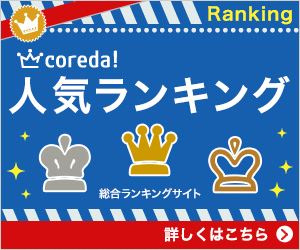

☆=========================================☆
広告
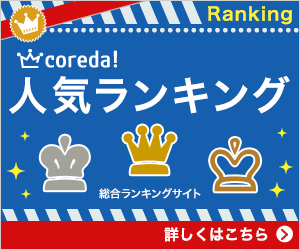

☆===================================================☆
広告


☆===================================================☆
広告


☆===================================================☆
広告
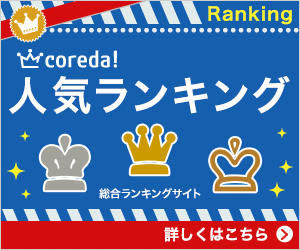

☆☆☆================================================☆☆☆
広告
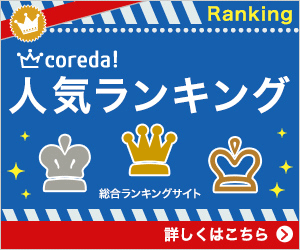

☆☆☆===============================================☆☆☆
☆☆☆===============================================☆☆☆





☆☆☆==============================================☆☆☆
広告 Google Ad
☆===================================================☆
広告 Google Ad
☆===================================================☆
広告 Google Ad
☆===================================================☆
広告
☆=========================================☆
広告
☆===================================================☆
広告
☆===================================================☆
広告
☆===================================================☆
広告
☆☆☆================================================☆☆☆
広告
☆☆☆===============================================☆☆☆
☆☆☆===============================================☆☆☆






